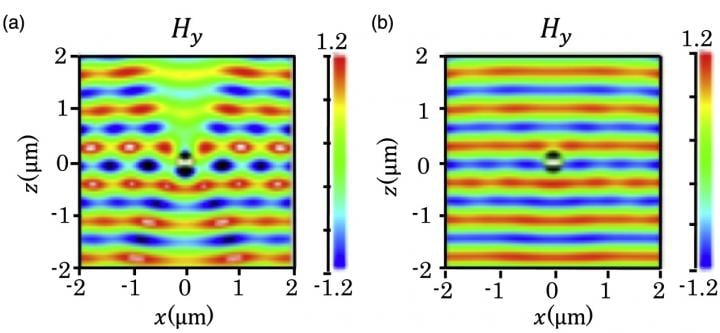TOKYO, April 23, 2019 — Researchers at Tokyo Institute of Technology (Tokyo Tech) have discovered a way to make a submicron-size cylinder disappear without using any specialized coating. Their findings could enable invisibility of natural materials at optical frequency and eventually lead to a simpler way of enhancing optoelectronic devices, including sensing and communication technologies.
Making objects invisible is no longer a fantasy but a fast-evolving science. “Invisibility cloaks” using metamaterials — engineered materials that can bend rays of light around an object to make it undetectable — now exist and are beginning to be used to improve the performance of satellite antennas and sensors. Many of the proposed metamaterials, however, only work at limited wavelength ranges such as microwave frequencies.
Kotaro Kajikawa and Yusuke Kobayashi of Tokyo Tech's electrical and electronic engineering department have reported on a way to make a cylinder invisible without a cloak for monochromatic illumination at optical frequency — a broader range of wavelengths that include those visible to the human eye.

Light with a wavelength of 700 nm traveling from bottom to top is distorted when the radius of the cylinder (in the middle) is 175 nm (a). There is hardly any distortion when the cylinder has a radius of 195 nm (b). Courtesy of Applied Physics Express.
They began by exploring what happens when a light wave hits an imaginary cylinder with an infinite length. Based on a classical electromagnetic theory called Mie scattering, they visualized the relationship between the light-scattering efficiency of the cylinder and the refractive index. They looked for a region that indicated very low scattering efficiency, which they knew would correspond to the cylinder's invisibility.
After identifying a suitable region, they determined that invisibility would occur when the refractive index of the cylinder ranged from 2.7 to 3.8. Several useful natural materials fall within this range — such as silicon (Si), aluminum arsenide (AlAs), and germanium arsenide (GaAs) — which are commonly used in semiconductor technology.
The new approach could provide a much simpler way to achieve invisibility compared to the difficult and costly fabrication procedures often associated with exotic metamaterial coatings.
The researchers used numerical modeling based on the finite difference time domain (FDTD) method to confirm the conditions for achieving invisibility. By taking a close look at the magnetic field profiles, they inferred that "the invisibility stems from the cancellation of the dipoles generated in the cylinder."
Although rigorous calculations of the scattering efficiency have so far only been possible for cylinders and spheres, Kajikawa said they plan to test other structures, but these would require much more computing power.
He said it should be relatively easy to perform experiments using tiny cylinders made of silicon and germanium arsenide to verify the current findings.
"We hope to collaborate with research groups who are now focusing on such nanostructures,” he said. “Then the next step would be to design novel optical devices."
Potential optoelectronic applications may include new kinds of detectors and sensors for the medical and aerospace industries.
The research was published in Applied Physics Express (https://doi.org/10.7567/1882-0786/ab02bb).